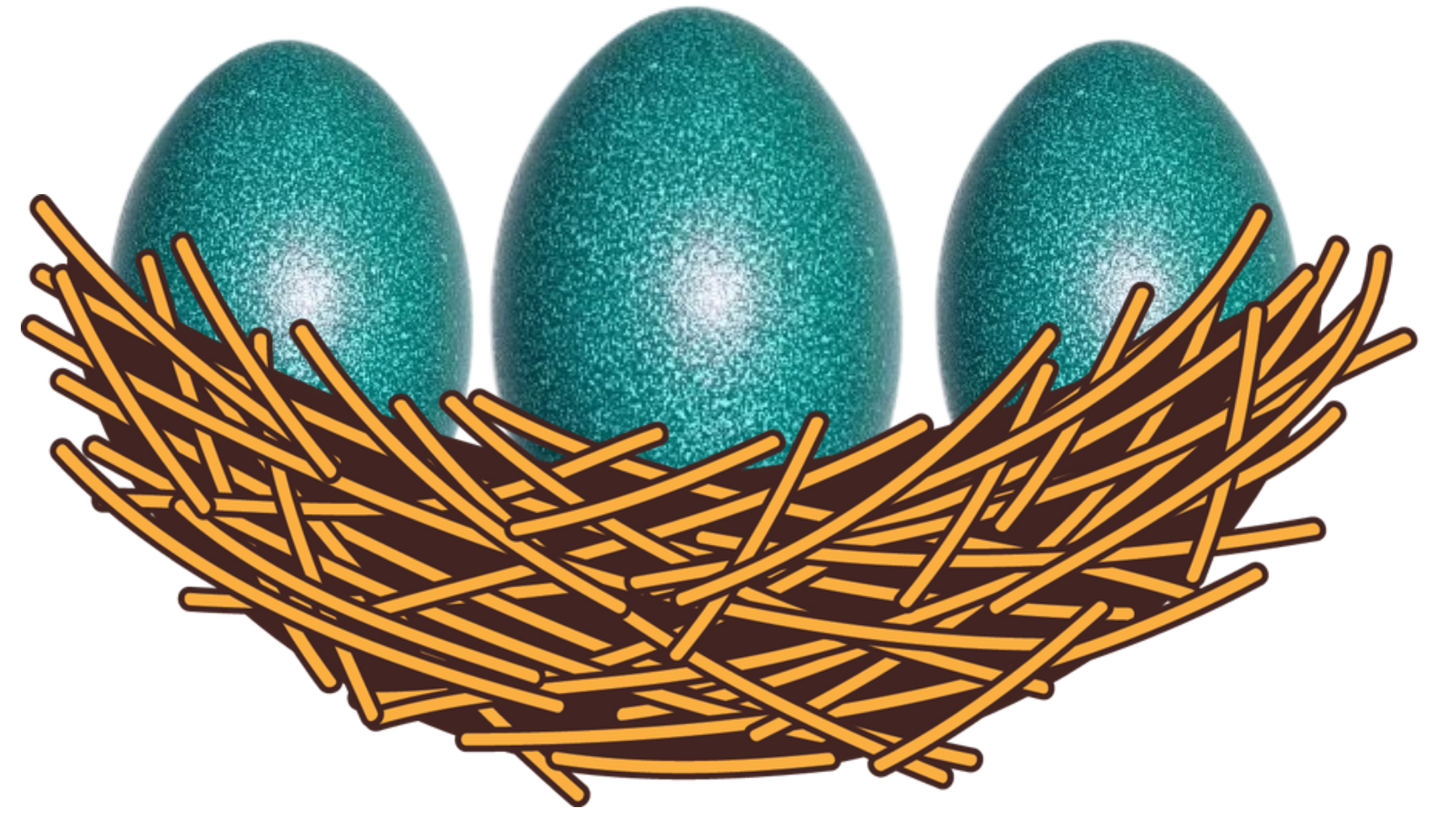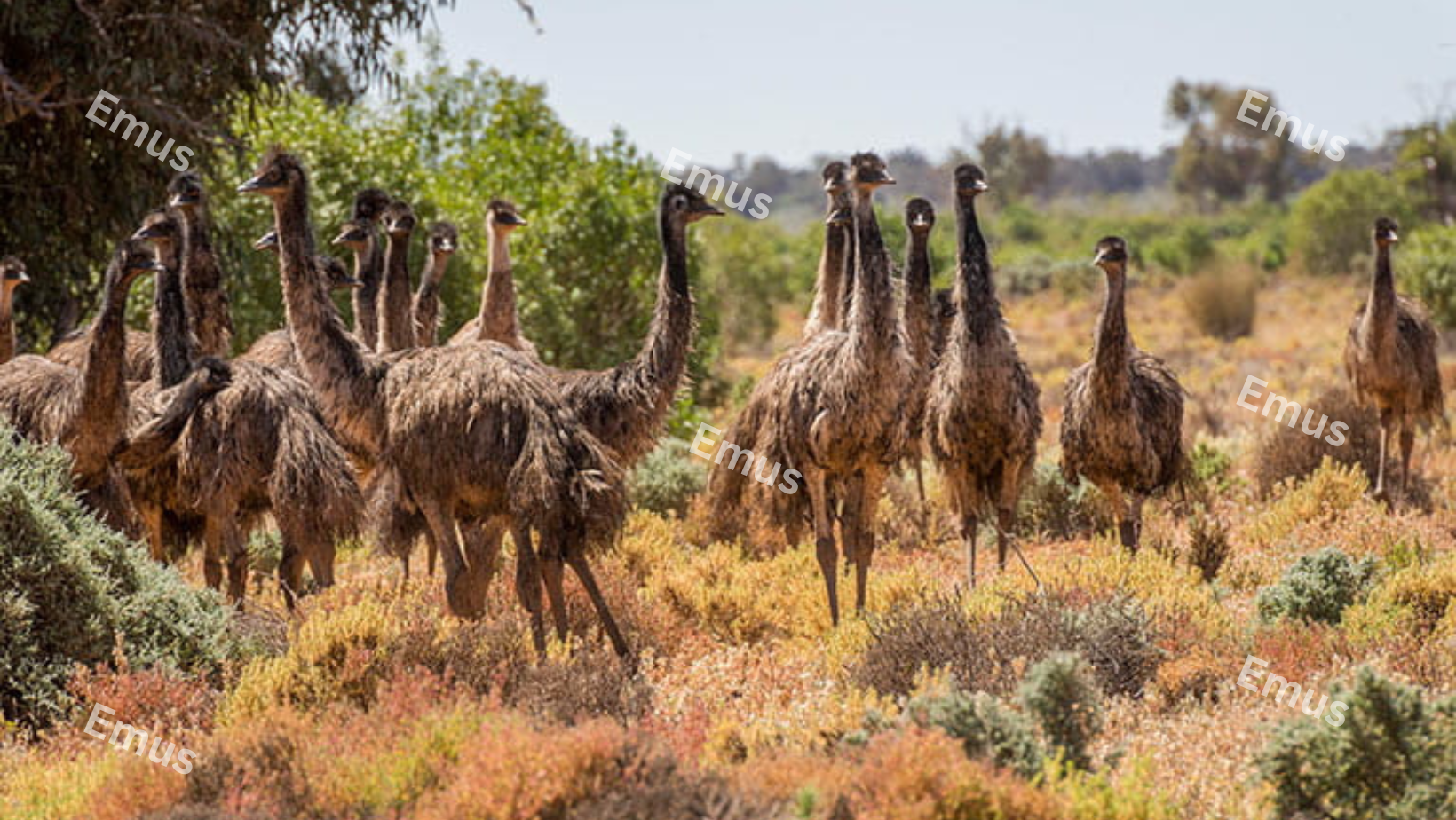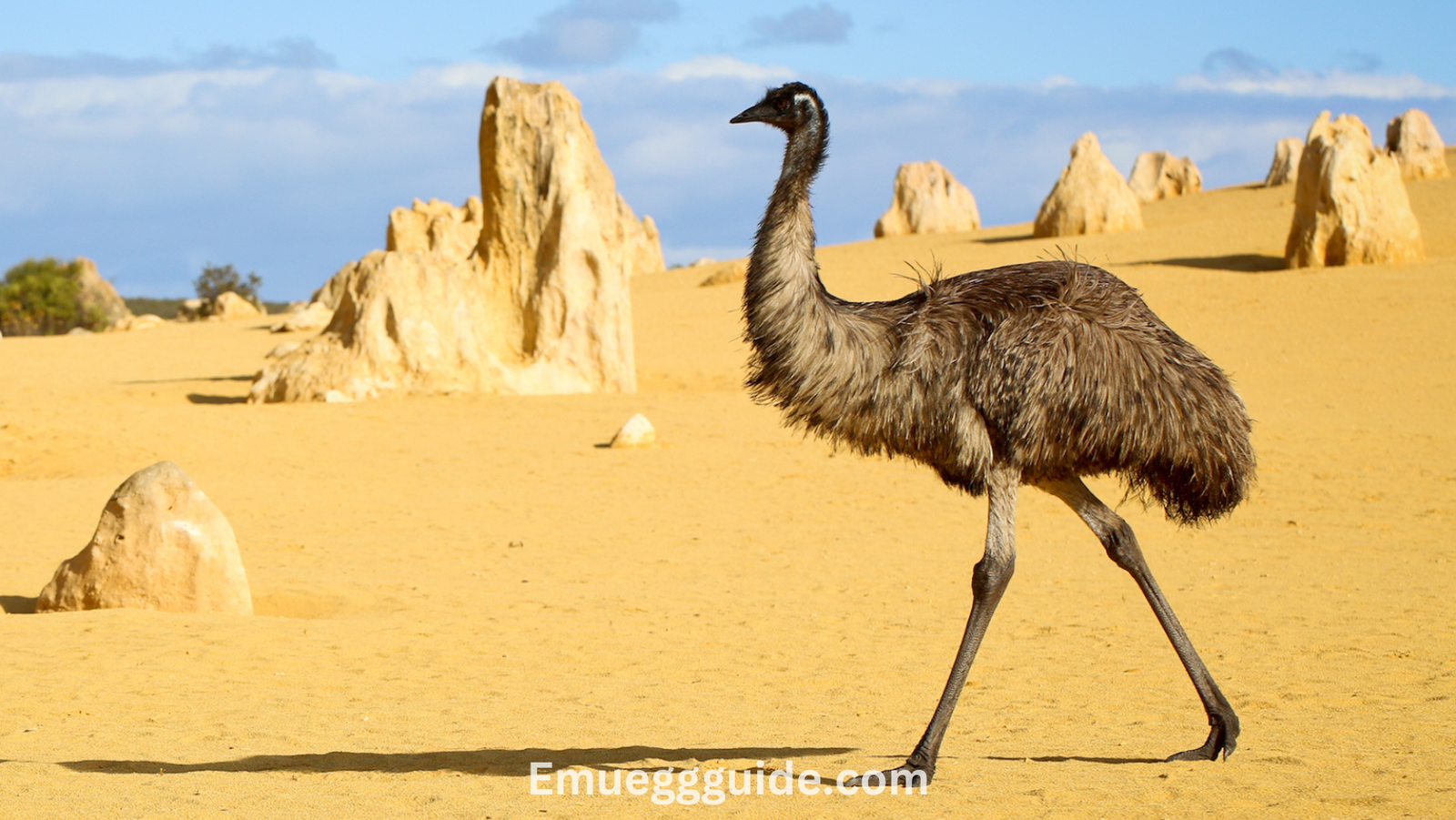The emu Australia flightless bird, is more than just a curiosity of nature. With their size unique behaviors and to diverse environments these fascinating creatures captivate the imagination. From their booming calls echoing across the outback to their swift sprints across open plains, emus offer a glimpse into the wild heart of the land they roam. The life of the emu its habits, habitats and the secrets that make it such an enduring symbol of the Australian wilderness.
Emu Size
On average, an adult emu can reach up to 6 feet tall with some individuals even surpassing that. Their height isn’t just for show a part of their survival. Those long, powerful legs allow them to cover vast distances in search of food and water and when they can sprint at speeds of up to 30 miles per hour.
Their size emus are weight between 80 to 120 pounds. This low body mass for their height is due to their hollow bones, a feature shared by most birds. While they are not capable of flight, these agile bodies allow them to navigate the Australian outback with surprising grace.
Their size coupled with their thick double layered feathers, gives them a presence in the wild an that stands out against the horizon. Whether grazing on vegetation or sprinting across the plains, the emu’s size is not just a defining feature but an evolutionary advantage, allowing it to survive in some of the most challenging environments on Earth.
Native Habitat
The emu is deeply connected to the landscapes of Australia, where it roams freely across a variety of habitats. From arid deserts to dense forests, these birds have adapted to nearly every environment the continent has to offer. Their natural range spans the entire with the exception of densely populated urban areas and the tropical rainforests in the far north.
Emus are most commonly found in grasslands, woodlands, and savannahs, where open spaces provide ample room for them to forage. These wide, open terrains suit their nomadic lifestyle, allowing them to roam great distances in search of food and water. The harshness of the Australian outback, with its weather and sparse resources, has shaped the emu’s resilience and over time. They can survive in environments with extreme temperatures, ranging from the heat of the desert to the cooler, more temperate regions of the southern states.
Water for emus, and they are often found near rivers, lakes, and other water sources, though they have been known to travel long distances between drinks when necessary. The emu ability to thrive in a country as diverse and challenging as Australia.
Emu Diet and Feeding Habits
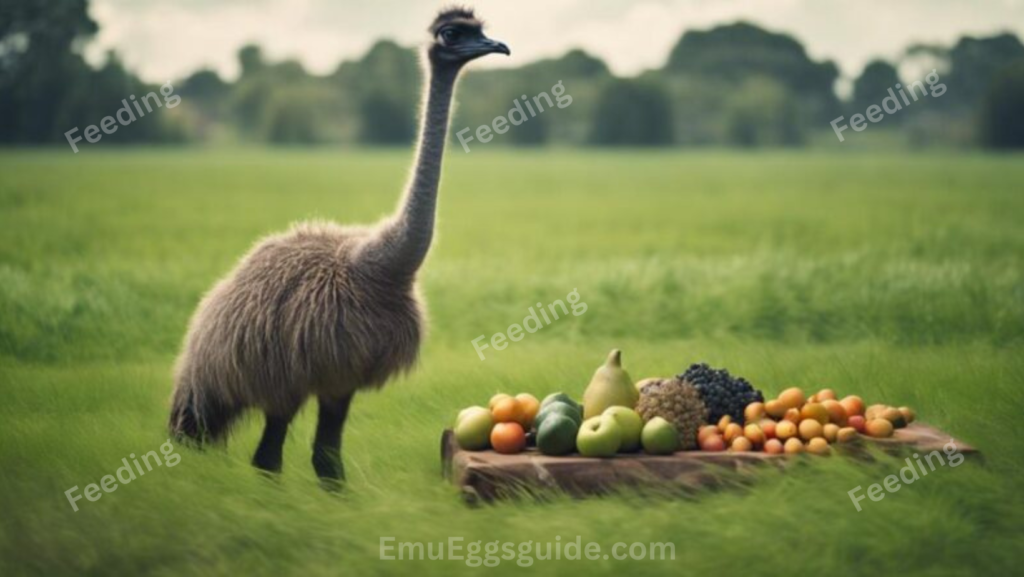
The emu is with a diet as diverse as the Australian landscape it inhabits. Emus thrive on a diet of grasses, leaves, seeds, fruits, and flowers, which make up the bulk of their intake. Emus readily consume insects, small animals, and even reptiles.
Emus feast on fresh grasses and leafy plants. During drier seasons or in harsher environments like the desert, they eat tougher plant matter, such as seeds and fibrous shrubs. They can survive even in regions where food sources.
Insects, such as grasshoppers, caterpillars, and beetles, also play a role in the emu’s diet, when high protein sources are needed to their nutrition. Emus have even been observed small pebbles and stones to help grind and digest the tough plant material they consume, a behavior common among many bird species.
About their feeding habits is their ability to store fat during times of abundance. Emus can build up significant fat reserves, which they rely on during leaner periods, allowing them to travel long distances in search of more favorable feeding.
Emu Breeding Season
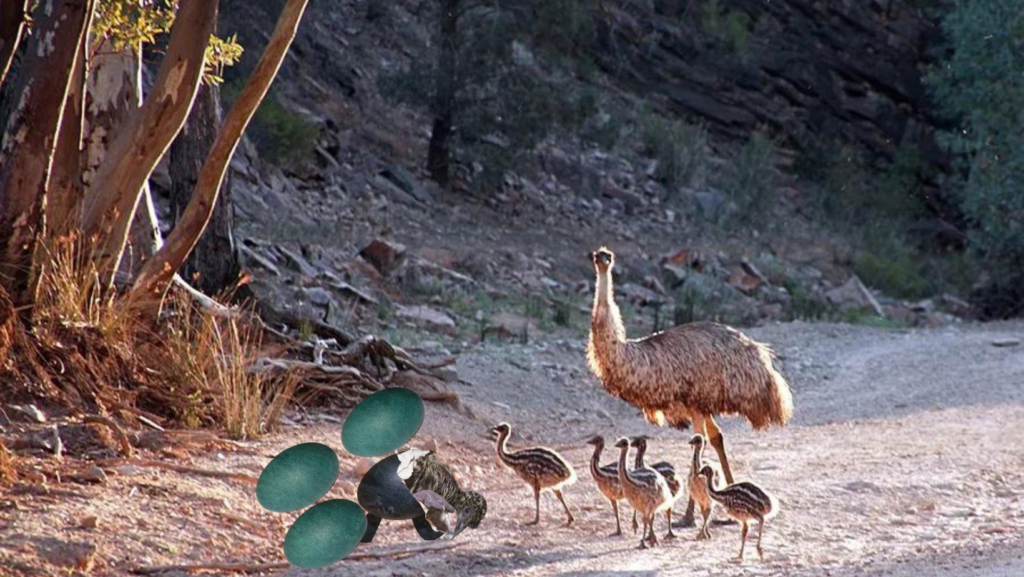
The emu’s breeding season, which typically runs from May to August, is a time role reversal in the animal kingdom. Unlike most birds, emus exhibit a unique approach to parenting, where the male takes on the primary responsibility for raising the young.
During the breeding season, male emus undergo significant changes to prepare for the demanding months ahead. They begin by building a nest usually a simple structure made from grass, leaves, and twigs on the ground in a sheltered area.
For the next eight weeks, the male emu will incubate the eggs, leaving the nest, even for food or water. His body slows down, allowing him to survive on fat reserves built up prior to the breeding season. During this time, he keeps the eggs warm and protected from potential threats
The emu is a bird, uniquely adapted to the diverse and challenging landscapes of Australia. From their imposing size to their varied diet and distinct breeding behaviors. Whether roaming vast grasslands or raising their young, these creatures offer an incredible glimpse into the wild heart of the Australian outback
